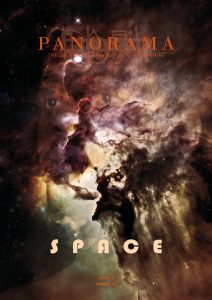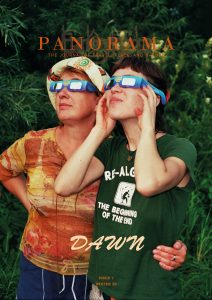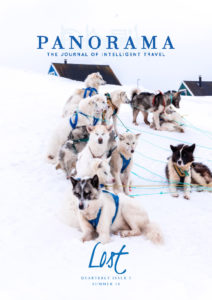A gaggle of wise-eyed Blackface Sheep watch my husband and me bustle into neon yellow boiler coats and black, knee-high wellies. The boiler coat is surprisingly comfortable; the thick material and tent-like shape cut the jarring edge of the North Sea wind. I feel at home in it and oddly invisible, as if the jacket transforms me from the American alien that I am into a natural feature of the Hebridean coast.
Sheep scatter as we climb through the metal bars of the gate, slip into the field, stand for a moment to see the Murray Croft roll on to fall into the sea. From our new vantage on the other side of the fence, I can tell that the slope is much steeper than it appears from the lawn.
*****
The road to Upper Bayble is a paved, single-track ribbon cutting across the moor on Point, the pensinsula that juts from Stornoway Harbour into the Minch, the channel between the Hebrides and Mainland Scotland. The road flows around the sea front at dramatic curves and angles to where we were, on a croft sitting peacefully mid-hill.
The Isle of Lewis is a land of green hills dappled by ancient brochs and primordial stone circles, white sand beaches and jewel-toned bays, rounded peaks of the stunning mountain range. Narrow roads are dotted with art galleries and cafes, and end in lovely coast towns with harbours of brightly painted fishing boats. Stornoway, the largest city, is crowned by a castle and a forest, and bordered by a dazzling harbour walk complete with a pirate cove and a smuggler’s cave. These adventures beckon us when we are not driven indoors by a downpour.
But today, after two years of marriage, three years of a romantic relationship, and ten years of friendship, Gordon and I are finally taking a walk “to the bottom of the croft,” as he calls it in his Lewis twang. “In the backyard,” I say in my own American drawl.
*****
We take hands, start our trek. My toes stub against the inside of my boots as I avoid pinecones of sheep manure. In the neighbouring field across the wires, a string of friendly Blackface ewes trot parallel to us, curious The lichen is vibrantly green for the end of February, in the lull between the ferocious gales of a northwest coast winter. It flourishes here in all weather, bursting in bright sprigs of color even in the towns, a testament to the purity of the air.
Since Gordon’s mother’s cancer returned, we have taken the ferry from the Mainland to visit them every month. Inside the croft house, the air is heated and pressured; stress presses at the seams of every conversation.
My husband is the natural black sheep of his family. He left the island for the Mainland after high school, and, unlike his siblings, never returned. Worse still, he married me: an Outsider from across the Atlantic. He is an easy scapegoat for the frustration and anger that over-boils from the natural anxiety of terminal illness, from the grief and fear that these tight-lipped Islanders are ashamed to express.
I breathe in, breathe out; taut wires of tension relax in my chest as we walk down the hill, immersing ourselves in the environment. The air tastes like sea spray, fresh and salty, and I remember why I fell in love with the Island.
*****
I had the opportunity to spend two weeks in the UK. During the last few, unplanned days before my flight home, I decided to make a spontaneous visit to an acquaintance on the Isle of Lewis. I fell head-over-heels in love with the green grass, the eccentric society, and the intricate layers of history. On this tiny island, in this culture that is lost to the rest of the world, I found a fresh start.
Seven years after my visit to the Island, I fell in love with Gordon, my friend from Stornoway. Despite the dramatic cultural differences between his old-fashioned Scottish Gaelic upbringing and my millennial American experience, we promised each other we would find a way to make our relationship work. We never imagined that his family, who had been so kind and hospitable to me as a guest before we were engaged, would hold it against us that I am a stranger to Gaelic culture – or envision the stress that such strained relationships would place on us.
Gordon picked up English when he went to school at age five. Before that, he spoke Scottish Gaelic with the rest of his family. Even after adopting English and participating in the modern Anglicized world, they live immersed in the vibrant Gaelic culture of the northern Hebrides. After we got married, I looked into courses for beginning Gaelic; eventually I gave up trying, dissuaded by the negativity of Gaelic specialists who told me that it is a privilege of birth and blood. Gaelic culture keeps its gates barred tightly.
*****
At the foot of the croft the land drops away, met by sharp black sea rocks, wet and slippery as seals. We slide at an angle down the bank of mud to land on the rocks, our faces lit by the reflection on the sea and the wonder of the tide pools left on the dimpled rock face. Ribbons of rusty kelp scroll across the sea surfaces, green shags of drenched moss carpet patches of the stones. Barnacles freckle the surface; the sea lapping hungrily around the edges.
I look from the edge at stones of Lewisian Gneiss, a granite-like rock found only in the Hebrides and the northwest Highlands, where outcroppings of gneiss boulders creates a bizarrely beautiful moonscape. The stones here on the shore are shaped small by the sea; black, tan, tiger stripes swirl their surfaces. I find a tiny striped pebble to slip into my pocket.
Gordon dashes across the rocks and stands, staring at the Minch chopping across to the Mainland. His dark head is brilliant against the electric yellow boiler coat; the two hills of Bayble Island ripple like the Loch Ness Monster in the sea behind his face. I know him in other places – in Oxford, Edinburgh, Glasgow and Inverness, and back in the American Northwest, places where his accent is warmed and softened until I barely hear the sharp nasal intonations of the Lewis tongue or the guttural inflections of a native Gaelic speaker. Here, in his fisherman jacket on his family’s croft, my husband’s past unlocks. I find myself understanding the part of him that always escaped me.
This landscape gives me a new perspective of its owners, helps me to fathom who they are.
He points out the spire-like rocks to our left, woven by sea inlets and surrounded by serrated undersea rocks, and talks about the ravenous, unexpected greed of sneak-waves, gushes of North Sea that take a mind to leap up and ravish the life around them with no warning. My hand presses my stomach automatically. When Gordon first told me he was not allowed to fish from the rocks on the beach as a boy, I compared it to the freedom of my childhood experiences swimming and boating in Louisiana bayous. Now, with the knowledge of the tiny, half-Gaelic, half-American baby inside of me, I feel a sudden and unexpected swell of empathy and understanding with his over-protective mother. I wonder what else I have misunderstood about her, and what we have lost in the constant translation between our cultures.
I stand with Gordon and my first-trimester stomach, watching the tumult of the sea before we step gingerly back across the rocks to the mud slope, grinding our heels in and climbing up to the sheep path that strings up and across the cliffs. We follow the fence until we come to a stile, our hands on the sagging wire, stepping firmly on the mud and avoiding the edge. As we climb up hillocks and down rivulets, the sea falls deeper below us, the cliff-drop growing severe. The crofts here are divided by wire sheep fences but accessible over frail, rotting pieces of wood – stiles that sometimes bridge treacherous gaps in the cliffside. The wild sea is bordered by serpentine cliffs, velveted with rolling green and treeless croftland, but I look at my feet, watch the sheep path until it wanders away from the drop.
As we round a curve, the wind is punctuated by the nasal calls of Artic Skuas, mottled white-grey sea birds that dive through the sky on hooked wings, circling two whales of rock offshore. Black, short-necked silhouettes of murres hunch like penguins in line across the stone masses.
“Eilean a’ Cháise– Cheese Island,” says Gordon. The smaller one, he says, is called “Mask.”
My mind is full of Robert MacFarlane’s masterful book, Landmarks. “Without a name made in our mouths, an animal or a place struggles to find purchase in our minds or our hearts.” In Lewis, every dimple of land has a name, a story; it is a land that is beloved by its people. As we lose the words for these facets of landscape, we lose our hold on the land as well.
The trail takes us sliding down the mud bank of a deep ravine. Green, brown, and purple lichen lines the streambed; the black water runs, winding, until it falls of the cliff not far from us. Across a rock, up a grass-tufted hill – the stile at the top is a relief, a chance to pause in the howling wind. Rough stone bricks, remnants of the blackhouses where previous generations lived, are scattered through the field. These stone cottages were built with thick walls, topped with tightly-woven straw thatch; families would often share a common warm space with their livestock, gathering around the earthy heat of a peat fire to weave baskets and spin wool through the winter.
Scottish Gaels have borne invasion and assault from the world outside these coasts for millennia. The threat of Norse warrior ships hangs over the shoreline, but also the reality of colonisation and modern cultural violations. The 18th and 19th centuries brought the brutality of English terror and genocide with the Clearances. In Gordon’s granny’s time, children would be beaten and sent home for slipping into their native language on the playground. His parents grew up with these threats. Currently, government grant funds are poured into Gaelic studies and cultural preservation. But as I take in the violence of this history, the distrust of people from beyond these shores becomes more and more understandable.
*****
Up, up, until the land meets the sky, sea gulls shrieking and swooping so close we can almost touch them. Our feet follow the curvature of the cliff – and the view steals my breath.
“There it is,” Gordon says, pointing, “Toll na Ròin– the Hole of the Seals.”
On one side, a rim of land edging the sea; a few paces from the cliff edge, the earth falls again – hundreds of feet, dashing against spears of rock and an ebbing pool of sea.
We step as close as we can, peering in – down, down, down. At the bottom of the pit is a hole, the gateway to the sea where the selkies would play. The seal-people would swim in through the hole in the moonlight, and interwed with the Islanders. They became woven into Lewis blood and story, twined into the fabric of the island. In the Hebrides, land and myth are inseparable entities.
The Spanish Armada took shelter from a storm in a Lewis bay in the 16th century. The memory returns every few generations when a Hebridean baby is born with an inexplicably dark shade of skin and Hispanic features, a descendent of the Spanish sailors. I relish the thought that not only could our baby be throwback to Pictish, Norse or Spanish ancestors, but this little tadpole inside of me could be a bit of a selkie as well.
As I take in this place and think about the history and lore, I realise that our international relationship is far from culturally shocking. Biracial marriage and children are honored by the most beloved legends of Lewis. I have my own time-honored, tale-honored place here. We all weave our own strands into the story.
The wind is fierce, the mud is slippery, the land itself is eroding – what exactly is keeping us from falling? I pull my husband and I back to a cautionary distance. We skirt around the hole, balancing on the narrow hem of earth between the cave and the cliff, stepping shyly to avoid the treacherous slopes of mud on either side of the single-foot track that beckons us into the sea and the rocks.
Heavy clouds press down against us, sending us across the ravine, back down the winding trail. Carrot-orange beaks of oyster catchers glow along the shoreline, striking in their tuxedos of white-tipped black wings.
We meet a neighbour at one of the stiles, a local cove who recognizes Gordon from a field away. He tells us, in a dawdling Lewis ramble, of the discoveries on Eilean na Mairbh, the Isle of the Dead, an islet of rock off the coast. An archeological team uncovered Iron Age artifacts and found it was designated to be a colony for lepers, outcasts. I look back at the black-coated murres on the islands, shuffling side to side and huddling. This background tangles into the current reality of wings, mud, and wool.
The fibres of Gaelic culture that seemed such an enigma before become clear in the long grass of this ancient footpath along the North Sea. Every step of our wellies covers a labyrinth of history and legend. Like everything I have experienced on this island, the croft is only a jot of geographical space on the map, but it is a world that expands exponentially through every footstep, growing deeper as I walk.
I stop to pick up a sprout of fruticose lichen, so vividly green it glows in my hand. The holdfast has been uprooted by a storm, but the delicate branches retain their shape untouched. I slip it into my pocket, a souvenir to remind me not to lose who I am, to hold on tight to what we have together.
*****
We step high over the last creaking stile, and reach the croft soil once more. This time exploring the island together is vital, life-giving. Without it, we risk losing the culture and landscape that grounds us; we risk losing each other, and ourselves.
We twine our arms, swinging our hands, binding our fingers as my Scottish Gaelic husband and our Gaelic American baby cross the field. The wind meets us as we walk along the long, slim stretch of land that has belonged to his family since memory began to the cosy family home at the top.











